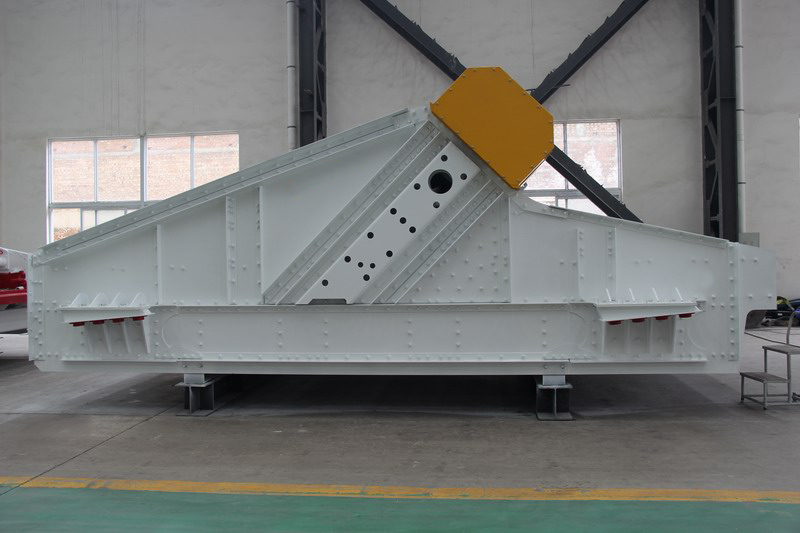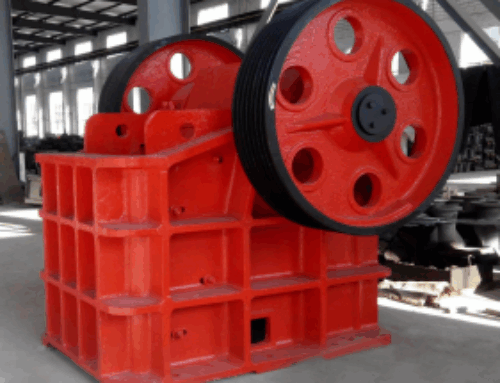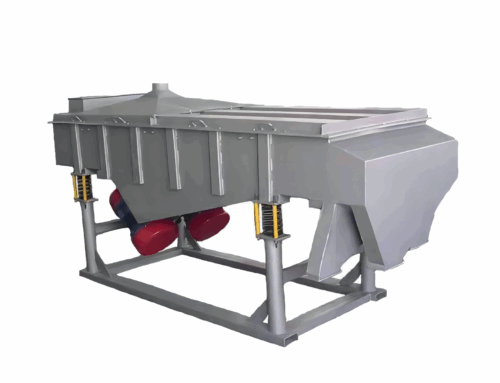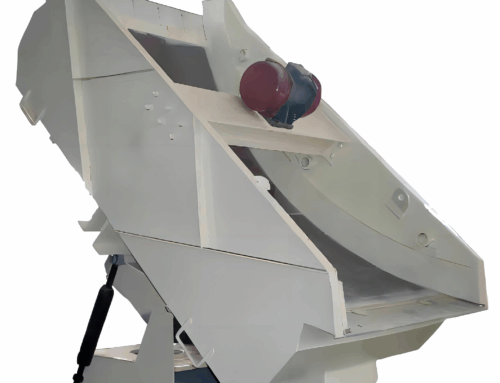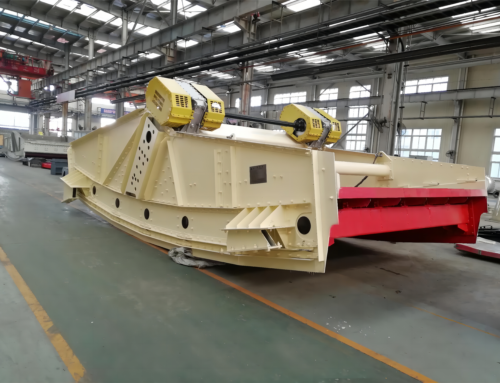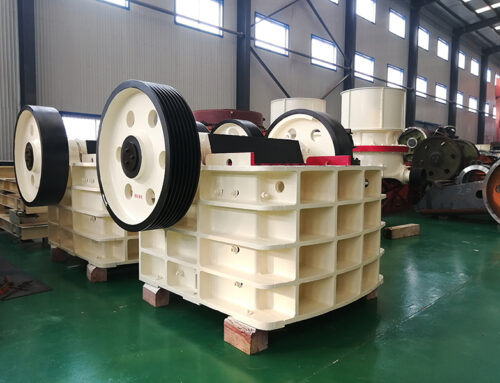In industrial production, vibrating screen is an indispensable equipment, which plays a vital role in material classification, screening, dehydration, desliming and other links. Whether it is mining, metallurgy, coal, building materials and other heavy industry, or chemical, food, medicine and other light industry, vibrating screen has a wide range of applications.
With the continuous development of industrial technology, a variety of types of vibrating screens have appeared on the market, including linear vibrating screen, banana screen, circular vibrating screen, circular motion vibrating screen, UHM series of curved vibrating screen is the more common five. These five types of vibrating screens have their own characteristics and play a unique role in different production scenarios.
一.Five kinds of vibrating screen overview
Linear vibrating screen is driven by double exciters, and the trajectory of the screen is straight. Its working principle is that when the two exciters do synchronous, reverse rotation, the excitation force generated by its eccentric block in the direction parallel to the motor axis to offset each other, in the direction perpendicular to the motor axis superimposed as a joint force, so that the screen machine to do linear motion.
Linear vibrating screen has the characteristics of low energy consumption, high efficiency, simple structure, easy maintenance and so on. It adopts fully closed structure, no dust overflow, can effectively avoid pollution to the environment. At the same time, the linear vibrating screen can screen out 7 kinds of materials with different particle sizes and has strong screening capacity.
Linear vibrating screen is widely used in coal, gold treatment, light industry and other industries, mainly used for screening fine-grade materials with light specific gravity and low hardness. For example, in the plastic, abrasive, chemical, pharmaceutical, building materials, grain, carbon, fertiliser and other industries, linear vibrating screen can play an important role.
Banana sieve has a sloping surface at the feeding end, and the sieve surface adopts the form of folding lines with different inclination angles. It is a linear vibrating screen with a box vibrator and multiple sections of different inclination screen surface, named because the shape of the screen box is similar to the banana.
Banana screen is characterised by strong screening capacity and small footprint. It is excited by box vibrator and adopts special bearings for vibrating machinery, which has large carrying capacity and long service life. The screen machine adopts gears to force synchronisation, and the vibrator is mounted on the main beam, so the screen machine has good strength. Meanwhile, the banana sieve is connected by ring groove rivets, which is simple, compact, firm, reliable, and convenient for maintenance and overhaul. In addition, banana screen adopts rubber spring vibration damping, smooth running over the resonance area, low noise.
Banana sieve is suitable for large and medium-sized production lines, such as metallurgy, mining, building materials, chemical industry and other industries. It is mainly used in coal and other industries to classify and dewater, desliming and de-mediation of various medium and fine materials. The banana sieve has a better adaptability to the material and produces less noise, which reduces the pollution to the environment. Its structure is simple, easy to install, the vibration motor can be designed according to customer requirements, and the maintenance is also more convenient. Due to the good sealing, the pollution to the environment is small, and can prevent the outside material into the equipment caused by material pollution. Simple operation, high degree of automation, can reduce the loss caused by operational errors.
When the circular vibrating screen works, the trajectory of any point on the screen box is a circle. It adopts cylinder eccentric shaft exciter and partial block to adjust the amplitude, the material screen flow line is long, screening specifications.
Circular vibrating screen has a relatively decentralised material and bouncing force, not easy to block the sieve holes, screen mesh with a long time to use, change the mesh quickly and so on. It is widely used in mining, sand and gravel, transport, building materials, energy and other fields, mainly used for screening materials with large specific gravity, large particles and high hardness. For example, in coal, metallurgy, mining and other departments, circular vibrating screen is used for product classification, strong processing capacity, high screening efficiency, with reasonable technical parameters, high structural strength, rigidity, reliable operation, low noise, easy maintenance and other advantages.
4.Circular motion vibrating screen
Circular motion vibrating screen screen box on any point of the trajectory for an ellipse. Its unit area has high capacity, high screening efficiency, good sealing and dust removal effect, and can effectively solve the problem of screen clogging.
Circular motion vibrating screen is suitable for many industries, such as food, chemical, pharmaceutical, ceramics, abrasives, metallurgy and so on.
5.UHM series curved surface vibrating screen
UHM series curved vibrating screen is mainly used in coal processing plant to carry out pre-dehydration, desliming and de-meshing operations. It can also be used in conjunction with hydrocyclone to effectively classify, dewater, desliming and demediation of fine-grained materials.
This series of vibrating screen has the advantages of energy saving, high efficiency, environmental protection, low noise, and significant increase in processing capacity. The screen body can be rotated automatically, which improves the service life of the screen plate and reduces human labour intensity; the screen surface angle can be adjusted, breaking the traditional limitations of the screen surface angle can not be adjusted; the use of a vibration motor, lower power, noise reduction, smooth operation; all rotating, adjusting the angle of all hydraulic structure cleverly lift and adjust, reducing human labour intensity.
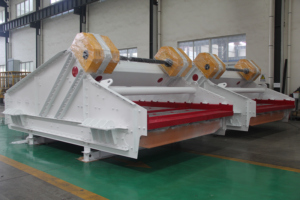
二.How to choose the right vibrating screen
1.Consider the material
Material type: hardness, properties, water content and so on.
Different material types have different characteristics, and their hardness, properties, water content and characteristics and other factors will directly affect the choice of vibrating screen. For example, for materials with high hardness, it is necessary to choose vibrating screens with strong wear-resistant performance, such as circular vibrating screens or banana screens made of manganese steel. For materials with high water content, it may lead to increased material viscosity, easy to block the sieve holes, at this time should choose the vibrating screen is not easy to block the holes, such as circular vibrating screen and circular motion vibrating screen, their trajectory makes the material relatively dispersed, and it is not easy to block the sieve holes.
The properties of the material will also affect the choice of vibrating screen. If the material is a fine grade material with light specific gravity and low hardness, linear vibrating screen is a good choice, and its linear trajectory can quickly advance this kind of material to achieve high efficiency screening. For materials with heavy specific gravity, large particles and high hardness, circular vibrating screen is more suitable. For medium and fine materials, banana screen’s multi-section different inclination screen surface and box vibrator can improve the screening efficiency and achieve good classification and dewatering, desliming, de-mediation effect.
The water content of the material is also one of the factors to focus on when choosing a vibrating screen. When the water content of the material increases, it may make the material sticky, easily blocking the screen holes and reducing the screening efficiency. For this situation, you can consider choosing a vibrating screen with special design, such as banana screen with multi-section inclined screen surface and box vibrator excitation, which can reduce the accumulation of materials on the screen surface and reduce the occurrence of blocking holes; or choose a vibrating screen with good dispersing effect, such as circular vibrating screen and circumferential motion vibrating screen, which reduces the blocking holes by the bouncing of the material and the complex trajectory of the movement.
2.Considering the actual production requirements
Screening grade, requirements, degree of filtration and so on.
In actual production, different industries and production processes have different needs for material screening grade, requirements and filtration degree. For example, in the chemical industry, the material may need to be fine screening to ensure the purity and quality of the product. At this time, it is necessary to choose a vibrating screen with high screening precision, such as ultrasonic vibrating screen or linear vibrating screen with multi-layer mesh, circular vibrating screen and so on. These vibrating screens can select different screen mesh according to different screening requirements, classify the materials and meet the strict requirements of chemical products on particle size.
In the food industry, the degree of filtration of the material is more demanding, and it is necessary to ensure that the material does not contain impurities and foreign objects to ensure the safety and hygiene of food. At this time, you can choose the linear vibrating screen with a fully closed structure or the vibrating screen made of stainless steel, such as stainless steel linear vibrating screen. These vibrating screens can effectively prevent dust contamination and foreign matter mixing to ensure the quality of food.
In the mining industry, the screening grade requirements for materials are more complex, and it may be necessary to classify materials of different particle sizes at the same time. At this time, circular vibrating screen or banana screen with multi-layer screen mesh and other vibrating screens can play an important role. They can be based on the needs of mine production, efficient grading and screening of ore and other materials, improve the utilisation rate of ore and product quality.
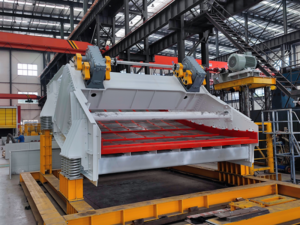
3.Consider the size of production output
Different models of vibrating screen production capacity differences.
There is a big difference in the production capacity of different models of vibrating screens. Linear vibrating screen is generally suitable for small and medium scale production, and its processing capacity is relatively small. For example, the screening output of some linear vibrating screens may range from 0.05t/h to 20t/h, which is mainly used for screening fine-grade materials with light specific gravity and low hardness. For small-scale production of plastics, abrasives, chemicals and other industries, linear vibrating screens can meet their production needs.
Banana screen is suitable for large and medium-sized production lines, and its processing capacity is strong. In coal and other industries, banana screen can classify and dewater, desliming and de-mediation all kinds of medium and fine materials with high efficiency, and its processing capacity is larger, which can meet the production demand of large and medium-sized production lines.
The processing capacity of circular vibrating screen is also stronger, which is widely used in mining, sand and gravel, transport, building materials, energy and other fields. For example, 3080 vibrating screen as a kind of large circular vibrating screen, according to the different layers of screen surface, its processing capacity is also different. The hourly capacity of 2 decks is generally 100 – 200t, the hourly capacity of 3 decks is generally 200 – 500t, and the hourly capacity of 4 decks is usually 300 – 800t. Circular vibrating screen is able to adapt to the large-scale production needs of materials with heavy specific gravity, large particles and high hardness.
Circular motion vibrating screen has high capacity per unit area, which is suitable for the production of many industries. Its processing capacity varies according to different manufacturers and models, but in general, it can meet the production demand of medium scale and above. For example, in food, chemical, pharmaceutical and other industries, the circular motion vibrating screen can screen materials efficiently and improve production efficiency.
UHM series curved vibrating screen is mainly used for fine-grained material processing in coal processing plant, and its processing capacity is relatively small, but it can meet the production demand of pre-dewatering, desliming and de-mediation of materials in coal processing plant.
In industrial production, the correct choice of vibrating screen is crucial. Linear vibrating screen, banana screen, circular vibrating screen, circular motion vibrating screen and UHM series curved vibrating screen each have their own characteristics and should be selected according to the actual situation.

